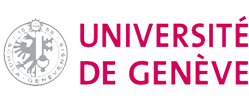Codicology of Legal Manuscripts
This text explores the materiality and functional design of medieval legal manuscripts, focusing on their layout, glossing systems, production, and circulation. It highlights how these manuscripts evolved to meet the practical needs of legal education and practice while reflecting broader social and intellectual contexts.
Mise en page (Page Layout)
The layout of legal manuscripts reflects their specific functional needs. Early manuscripts featured long-line text formats, but two-column layouts became the norm to efficiently accommodate normative texts and glosses. Visual elements like rubrics, initials, and paragraph marks provided navigational aids, compensating for the lack of foliation or pagination.
Evolution du format et articulation du texte (Evolution of Format and Textual Articulation)
The format and textual articulation of manuscripts evolved alongside scholarly practices. Early legal manuscripts were compact, but later volumes expanded in size to incorporate more extensive glosses. The hierarchical structuring of text—using color-coded initials and divisions—enhanced usability and became increasingly sophisticated.
La mise en glose : gloses anciennes et signes spéciaux (The Glossing System: Early Glosses and Special Symbols)
Glosses, essential for interpreting legal texts, were arranged in various formats. Three main types included explanatory glosses in the margins, cross-references linking related laws, and notabilia that highlighted important points. Red symbols, alphabetical markers, and other paratextual devices ensured efficient navigation.
Mise en page d’apparats des gloses (Layout of Gloss Apparatus)
The layout of glosses became more standardized over time. By the 13th century, glosses formed structured blocks around the main text, marked by initials and paragraph signs. These layouts ensured that commentary could be read simultaneously with the base text or located easily for reference.
Additiones et sigla des glossateurs (Additions and Glossators’ Marks)
Later glossators added new layers of commentary, often marked with sigla (abbreviations of their names). These additiones updated or supplemented earlier glosses, reflecting the evolving nature of legal scholarship. The identification of glossators and regional schools through these annotations provides insights into the intellectual networks of the time.
Mise en texte et mise en glose : solutions spatiales (Text and Gloss Layout: Spatial Solutions)
As glossing systems expanded, scribes devised creative solutions to fit commentary alongside the main text. Techniques included adding extra pages, using symbols to connect split glosses, and employing decorative elements to guide readers. These innovations balanced functionality and aesthetic appeal.
Mise en page des textes non-normatifs (Layout of Non-Normative Texts)
Non-normative texts like commentaries and treatises adopted simpler layouts, reflecting their supportive role to normative texts. While they lacked the extensive glossing of legal manuscripts, they mirrored the structural divisions of the primary texts, maintaining rubrics and visual hierarchies.
Les mises en page particulières : les diagrammes juridiques (Specific Layouts: Legal Diagrams)
Legal manuscripts often included diagrams, such as consanguinity and affinity trees, to visually represent complex legal relationships. These tools, essential for fields like marriage law, were highly structured and often spanned multiple pages, demonstrating the functional integration of visual aids in legal scholarship.
Production et provenance (Production and Provenance)
The production and dissemination of legal manuscripts were shaped by academic and professional needs. Initially created in ecclesiastical settings, their production later centered on university towns, where specialized workshops standardized layouts and ensured high-quality outputs.
Système de copie par exemplar et pecia (Copying System: Exemplar and Pecia)
The exemplar and pecia system revolutionized manuscript production by allowing simultaneous copying of standardized sections. Originating in Bologna, this system ensured consistency and efficiency, supporting the growing demand for legal texts in academic institutions.
Circulation des manuscrits : origine et provenance (Manuscript Circulation: Origin and Provenance)
Legal manuscripts were highly portable, often traveling with students and scholars. Ownership marks, colophons, and other annotations document their movement and use across regions. These traces provide valuable insights into the diffusion of legal knowledge and the social contexts of manuscript use.
Conclusion
Frońska’s work highlights the sophistication of medieval legal manuscripts as both physical and intellectual artifacts. Their layouts and glossing systems were not only functional but also indicative of the academic and cultural contexts in which they were created. The production and circulation of these manuscripts played a vital role in the dissemination of legal knowledge, shaping the evolution of medieval legal traditions across Europe.







